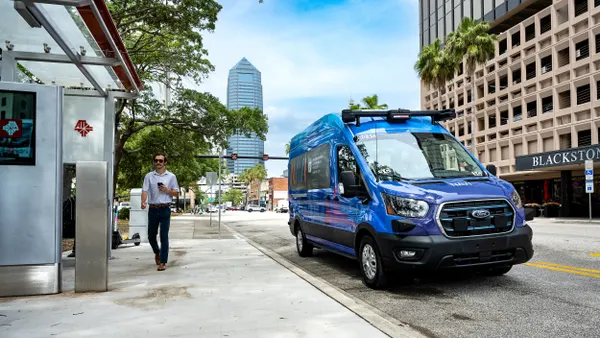Editor's Note: The following is a guest post from Siegfried Gross, vice president and general manager of Keysight Technology’s Automotive and Energy Solutions business unit.
Talk to the average person about what they expect from the car of the future, and inevitably the conversation will turn to "The Jetsons". Set in a distant utopian future, the animated television series featured autonomous vehicles zooming between smart homes in the sky, where the Jetson family seemingly lived a life of ease where robots do everything for them.
It’s funny that with all the benefits that autonomous vehicles (AVs) promise, it’s convenience that makes the biggest impact on most people today. They envision themselves like the Jetsons relaxing in some sort of pod, seamlessly zooming through traffic as they read a magazine, watch TV or catch up on some much needed sleep.
Whether this vision will become reality is up for debate, and I’m not one to predict the distant future. But what I do know is this: While people are focusing on ease and convenience, they are missing two ground-breaking benefits that the car of the future will definitely deliver — saving lives and reversing climate change.
Saving lives and our planet
It’s not unrealistic to think that connected cars will save hundreds of thousands of lives per year. According to the Association for Safe International Road Travel (ASIRT), 1.3 million people die in road crashes each year, ranking as the ninth leading cause of death globally. It’s estimated that 80% of these deaths are caused by human error, meaning that technology that can take decision making out of the hands of drivers can theoretically save more than 1 million people per year. That’s an incredible number.
At the same time, the switch from fossil fuels to rechargeable batteries has the potential to eliminate millions of tons of carbon emissions from entering the atmosphere. Even the most modest targets in the Paris climate accord cannot be met as long as we continue to rely on vehicles that run on fossil fuels. Lithium-ion batteries are the key to meeting these emissions standards and reversing climate change projections, but we have to act fast. Nearly 100 million new vehicles hit the road each year — the majority of them major polluters.
The need for testing and measurement
The car of the future has the potential to save a million lives per year and ensure our planet remains livable in the foreseeable future. So, what’s taking so long? For one, change is hard. Established interests are pushing back against progress, citing Big Brother, hackers and other bugaboos. And they have an argument to make — to a point. Before AVs become ubiquitous, the industry will need to address critical connectivity and security issues through rigorous testing and reliable measurement.
Connectivity: Just a mere 0.3 second delay in reaction time can result in an extra 20 feet of braking distance while traveling 50 miles per hour — easily the difference between stopping safely and plowing through traffic. The connected car will need to be stress-tested extensively to ensure reliability and performance and monitored constantly for any bottlenecks.
Security: Unfortunately, even the most hardened computer networks are susceptible to cyberattacks, so operators will need to continuously monitor autonomous systems for vulnerabilities. Instead of locking down the perimeter (which has been proven to be nearly impossible) autonomous vehicle operators will need to monitor for unexpected, abnormal behavior — perhaps network traffic flowing to an anonymous remote server.
There’s no doubt. The car of the future will save lives and reduce harmful carbon emissions from warming our planet. However, many barriers will need to be overcome — most importantly, the reliability and security of autonomous driving technology. The industry will need to implement rigorous testing, monitoring and measurement to ensure the car of the future is safe and gain public trust in the new technology. The future of mobility depends on it — whatever vision you believe in.









